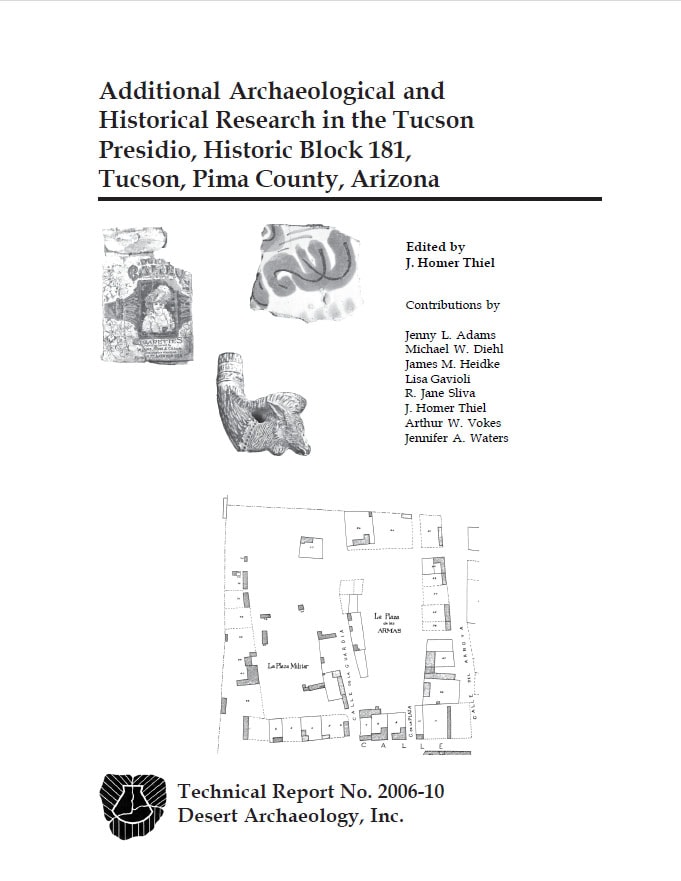Description
Additional Archaeological and Historical Research in the Tucson Presidio, Historic Block 181, Tucson, Pima County, Arizona (TR2006-10) (PDF)
Archaeological fieldwork was conducted on Block 181, in the historic heart of downtown Tucson, at various times between 2003 and 2006. Work took place before and during the stabilization and restoration of the historic Siqueiros-Jácome House, built in the 1860s and 1870s. Work was also conducted in the backyard of the house and beneath an adjacent parking lot, once the location of the Dodge Boarding House (circa 1898-1954).
Hundreds of features were located. Noteworthy were several Early Agricultural period pit structures, the first found on the terrace east of the Santa Cruz River floodplain. Colonial and Sedentary period Hohokam pit structures and pits were also located. The evidence suggests a substantial prehistoric presence in the downtown area. The survival of a diversity of prehistoric features in this heavily developed area was particularly encouraging.
The project area was the location of the northeastern corner of the Presidio San Agustín de Tucson, a Spanish and Mexican period walled fortress. Previous work on the property had located the adobe foundations of the northeastern tower of the fort. The current work encountered trash-filled pits containing Presidio era artifacts and food remains, providing additional information about the lifestyles of the people who lived in the fort from about 1776 to 1854.
The Siqueiros-Jácome House was occupied by the family of Juan Siqueiros and Soledad Jácome from about 1866 until Soledad’s death in 1911. Features in the home’s backyard yielded noteworthy assemblages of artifacts discarded by this family and the people who rented rooms in their house. The adjacent lot contained the remnants of the Dodge Boarding House, and several large trash-filled borrow pits provided artifacts and food remains discarded by boarding house residents. Little is known about the lives of these people, who typically stayed a short while before moving on to other quarters or other cities. The items thrown away by these people provide insights into their lives not recorded in contemporary records.
An important part of the project was the preservation in place of cultural resources. Large portions of the corner parking lot were not disturbed during construction and have the potential to provide significant new information for future archaeologists.
